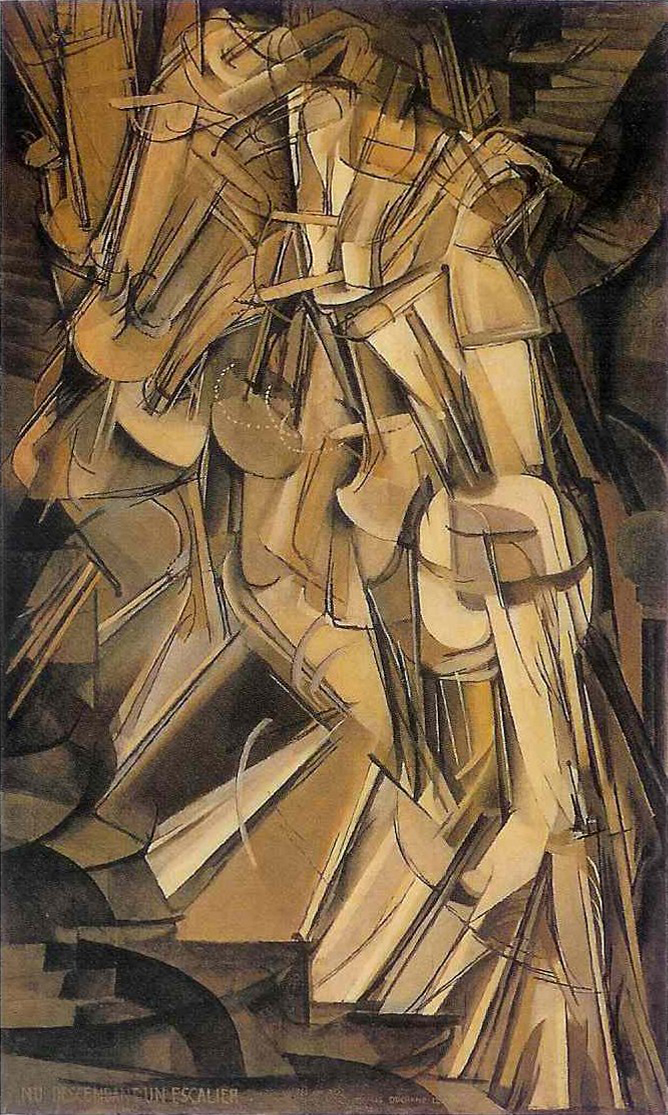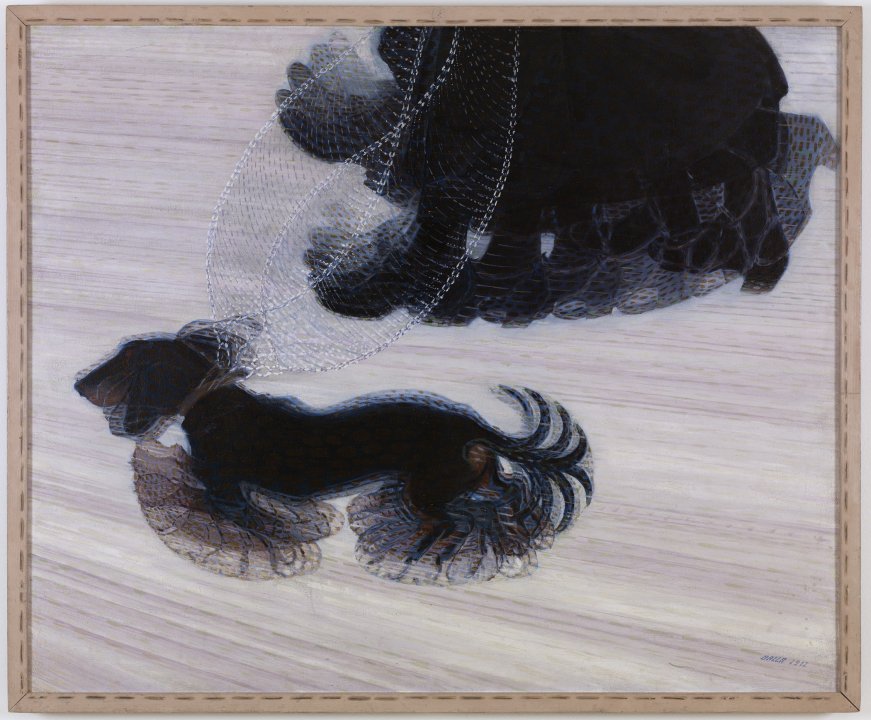Scott Hutchison's Metamorphosis: Superimposed Moments in Time
Metamorphosis, 2016, oil on canvas
Scott Hutchison is a contemporary artist working in the USA. Most of his works are portraits of humans that are not depicted in a classical way. In fact, Hutchison's compositions are the result of a sequence of frames superimposed and collaged digitally. This technique was originally developed by Italian Futurist painter Gicacomo Balla. In 1912, he painted Dynamism of a dog on a Leash. It depicts a dachshund on a leash and the feet of the lady walking it. They’re both in rapid motion as indicated by the blurring and multiplication of their body parts. Balla was one of the first artists to introduce chronophotographic studies into art. By decomposing the movement into moments in time he reached a new level of abstractionism and dynamism. In the same year, Duchamp used to employ the same technique by depicting Nu descendant un escalier n° 2 (1912). While Balla and Duchamp’s studies are analytic in highlighting the dynamism and energy of the movement, Hutchison goes beyond. He breaks up the instants of time and then brings them back together while overlapping the images. The underlying message is that we are a sequence of experiences and layers of knowledge. We’re simply defined by them. Hutchison explains, ‘the individual is a complex and conscious being but I would add that the individual is in flux. Forever changing from one experience to the next. Time and our experience of it changes us.’[1]
Hutchison’s Metamorphosis (oil on aluminium) fits perfectly in this context. Two different moments are frozen in a round composition called a Tondo concretise the meaning of metamorphosis that the artist want to suggest. A feminine figure seems to be compressed by the circular form of the painting, but four disembodied hands move freely in the circle and seem to have their own mood. Each hand is one element (feel, think, act and relate) of the experience that model and shape the human being personality. Through everyday actions and decisions each of us assumes new behaviours, which change our brain's structure. Sometimes our brain and behaviour metamorphosis is so little that we don't even notice it. Vice versa, it is so strong and aggressive that we feel scared, confused and compressed by the same experience. We feel (but can't perceive) a plural being in ourselves: what we were, what we are and what we could be. Hutchison’s overlapping technique suggests exactly this.
The two hands from behind the girl alive, reaching toward the light. The use of chiaroscuro, a clear recall and influence of Caravaggio. The light assumes a leading role, emphasized even more by the darkness of the background, that establish depth on the composition. Then the external and the one and only source of light makes the figure tri-dimensional. The girl seems to be stuck between two different worlds. The more her body is exposed to the light, the more she appears recognisably human. The colours are vibrant, natural, soft, and real. On the contrary, the less her body is exposed to the light, the more she seems to be a monster, shifted in an unknown and parallel dimension (probably our past, our future or something that is not under our control) in which the colours are synthetic. They’re neon-blue and green. Moreover, the overlapping poses are a device to abstract the figure and bring conflict to the scene, but without losing the structure of the human being.
Metamorphosis I, 1937, M.C. Escher, woodcut
Metamorphosis is a complex and real-surreal painting where time, the self and our perceptions appear as an illusion. The same concept can be found in M.C. Escher's works, especially in the set of Metamorphosis I (1937) where the concept of this pieces is to morph one image into a tessellated pattern and then slowly alter that pattern eventually to become a new image. It’s only the trick of geometry. Hutchison, however, gives to his painting a subjective, revolutionary and abstract tone. He explains that, for him, art is an ‘individual, honest and seeks for a type of truth.’ So each of his work is highly personal, unique and in a continuous metamorphosis, in search of new shapes, forms and essences.
Visit Scott's Instagram or website to find out more about his work!
[1] Artist’s blog and website, <http://www.scotthutchison.com> [accessed 10 Dec., 2017].



